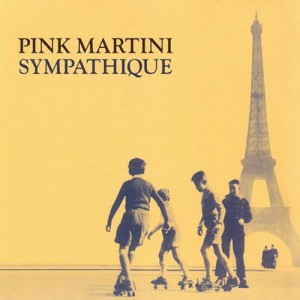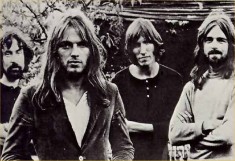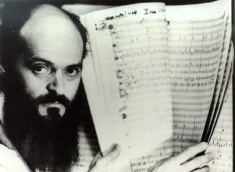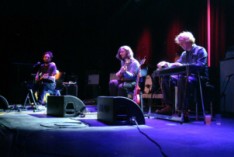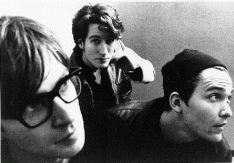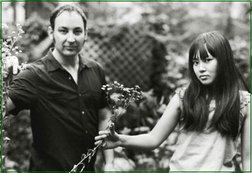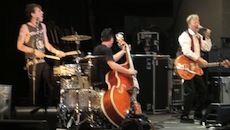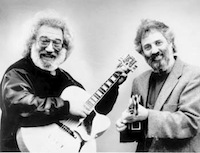
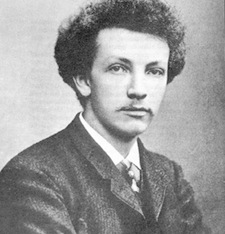
Tonight’s rips were a few discs of Saint-Saëns (mostly chamber music) some Satie, a disc of Karajan conducting Richard Strauss and a four-disc set of the Miles Davis Quintet (specifically his concerts in Stockholm from 1960, with a couple shows featuring the last few with John Coltrane and a few more with Sonny Stitt on tenor).
I picked up the Strauss disc while preparing to play ‘Death and Transfiguration’ in the orchestra at UC Berkeley. I hadn’t heard much Strauss yet at the time, but playing the piece made me very interested in his work. The bass parts were pretty amazing, and the more I listened to his work the more I was amazed at his melodic construction. The lines would sweep over wide intervals, yet they would still be so operatic and dramatic. Bass parts that would move across two octaves in a little more then a measure! It was one of the times I remember seeing notes on a page, and not believing they could possibly be the correct ones. Until the moment we played them.
The biggest surprise to me though was the end of the piece, or rather the last 4 minutes or so of the piece (the ‘Transfiguration’ section). After violent, dark death throes and moments of resigned but dark calm, a huge C major chord emerges and fades away for the rest of the piece. Apparently, Strauss really wanted to write a piece that ended in C major. The preparation for this chord though, and the duration that it lasts, makes this unlike just about any other C major chord. The chord that just about any piano student learns first, one of the first that just about any musician learns, and probably the chord just about anyone would play if you asked them to play a major chord. I wouldn’t be surprised if it may be one of the most heard chords in western culture. And the idea that Strauss felt like he couldn’t end a piece (in the late 19th century) in C major hints at the feeling that such a thing was too cliche. The length of the chord and how it disappears though creates something more then a chord itself. It is stunningly beautiful because of what precedes the moment, and the way the spectrum of the chord dissipates is, for its time, a beautiful experiment.
The Miles Davis discs are an interesting way to organize a collection – find the shows that a group recorded in a city over the course of a year. It becomes even more interesting when that is a group in transition, coming off of experimental success, and falling apart at the same time. A year after ‘Kind of Blue’, the group has taken the approach that led to the album into the live arena. But Coltrane is about to take off onto his own (taking some of those ideas from ‘Kind of Blue’ to new extremes) and it will take years before Miles pulls together a group again that will have as much consistency and the ability to start exploring again as the quintet that created ‘Kind of Blue’. Sonny Stitt (in the later concerts) play great, but hearing Coltrane in the earlier set shows him taking steps and risks that will propel the rest of his career.
On the first track (‘So What’) as Coltrane begins his solo, it sounds like he misses something … perhaps he didn’t adjust his embouchure when he held down the octave key, or he misses a fingering in his quick melodic passage that causes there to be a strange break in the register. Something doesn’t quite speak right, and rather then pause and move on, he takes the sound that has been created and plays with it for a couple of choruses. After he has explored it, he goes on and shapes basically what seems like a second solo. His solos on these recordings get quite long actually, and are filled with exploring possibilities of small fragments or ideas.
Another treat on the disc is a short radio interview with Coltrane, and the interviewer asks Coltrane about comments that his playing is ‘angry’. After hearing such long extended explorations of sometimes furious notes, you can see how on a casual listen it may sound hectic or filled with frustration. But Coltrane explains that he doesn’t feel like his playing is angry at all, and that he can’t really understand why others would say this about his playing. When I first got the discs, I went back and listened to the tracks again right after hearing the interview and can see how a very superficial hearing of his playing would seem angry. But I also really can’t place myself in the circumstances. I’m not a guy in an audience in 1960, much less a white guy in a possibly segregated audience watching black musicians on stage. At the time, hearing someone play with such such focused energy and intensity could be seen as anger. Hearing Coltrane say that he doesn’t think it is angry at all though shows how much he was focused on what he was creating with the group he was in. Not that he was ignoring the audience, but his primary concern was exploring the material that came to him and the group the moment it was happening.
The more I hear these recordings though, the more I feel like I am missing something by hearing them over and over again. Listening to them once is a treat. But going back to hear them a second time, to have that opportunity (while amazing) also makes these performances feel more permanent they they ever were. To hear these in the moment in 1960 when they were created was what this music was intended for. To hear it once 40 later is lets you imagine that moment. The hear it over and over again for 10 years starts to make it seem less spontaneous on one hand (I can even hum along on some of the solos at this point). So there is a special part of this performance that starts to disappear. But I also have the benefit of being able to see just how amazing the construction of these moments was, and how the musicianship of Coltrane, Miles Davis and everyone else in the group is pretty stunning. The more you hear it and become familiar with these fleeting moments of performance, the more you can appreciate the level of playing on these recordings. So on the one hand, the feeling that this is a ‘moment’ seems to disappear. But on the other, there is a level of appreciation that you can only get from repeated listening and learning affords us. The real question might be… is that trade off worth it?
Perhaps the fact that I’m asking shows that I need to see more live music.




